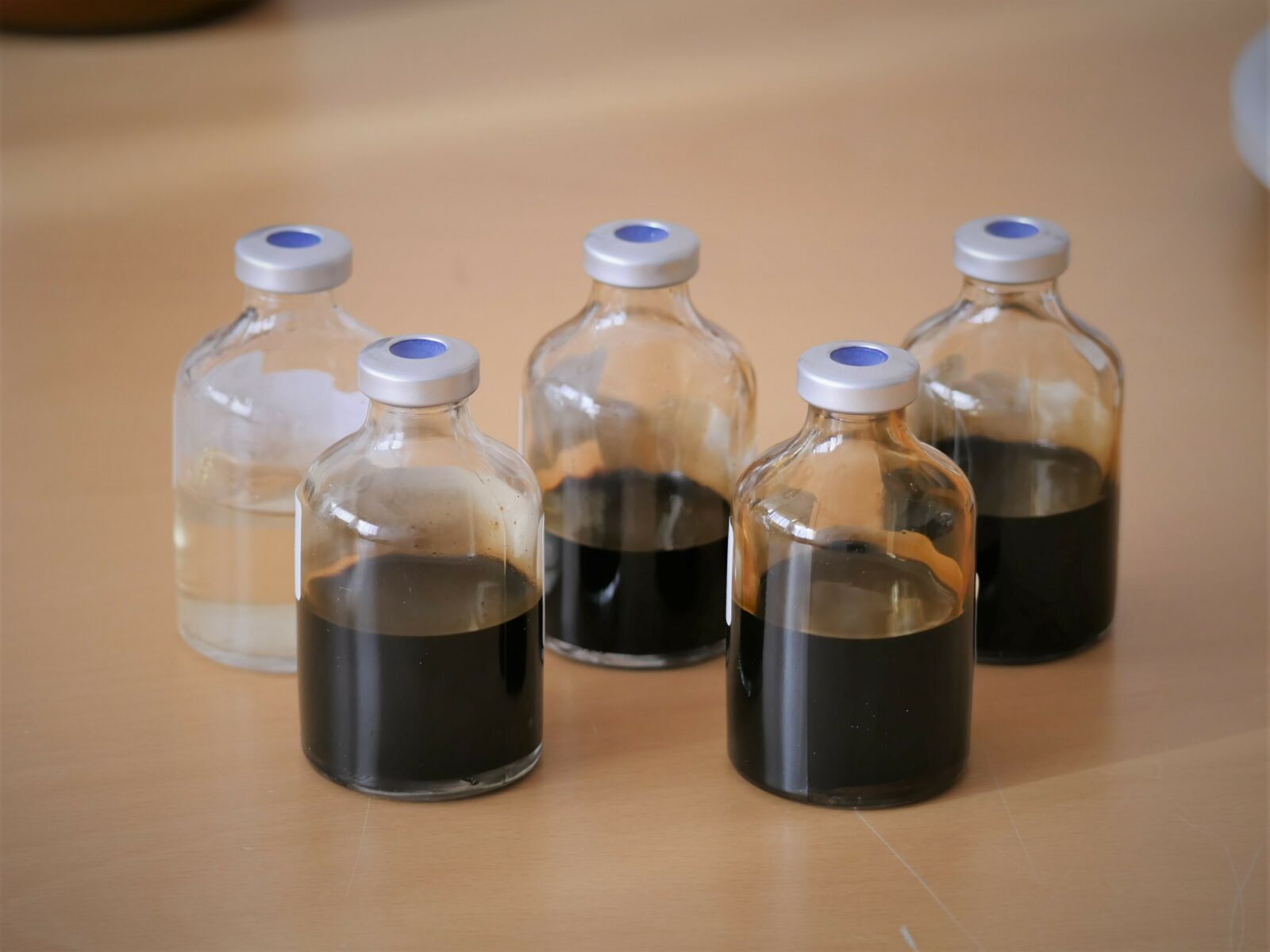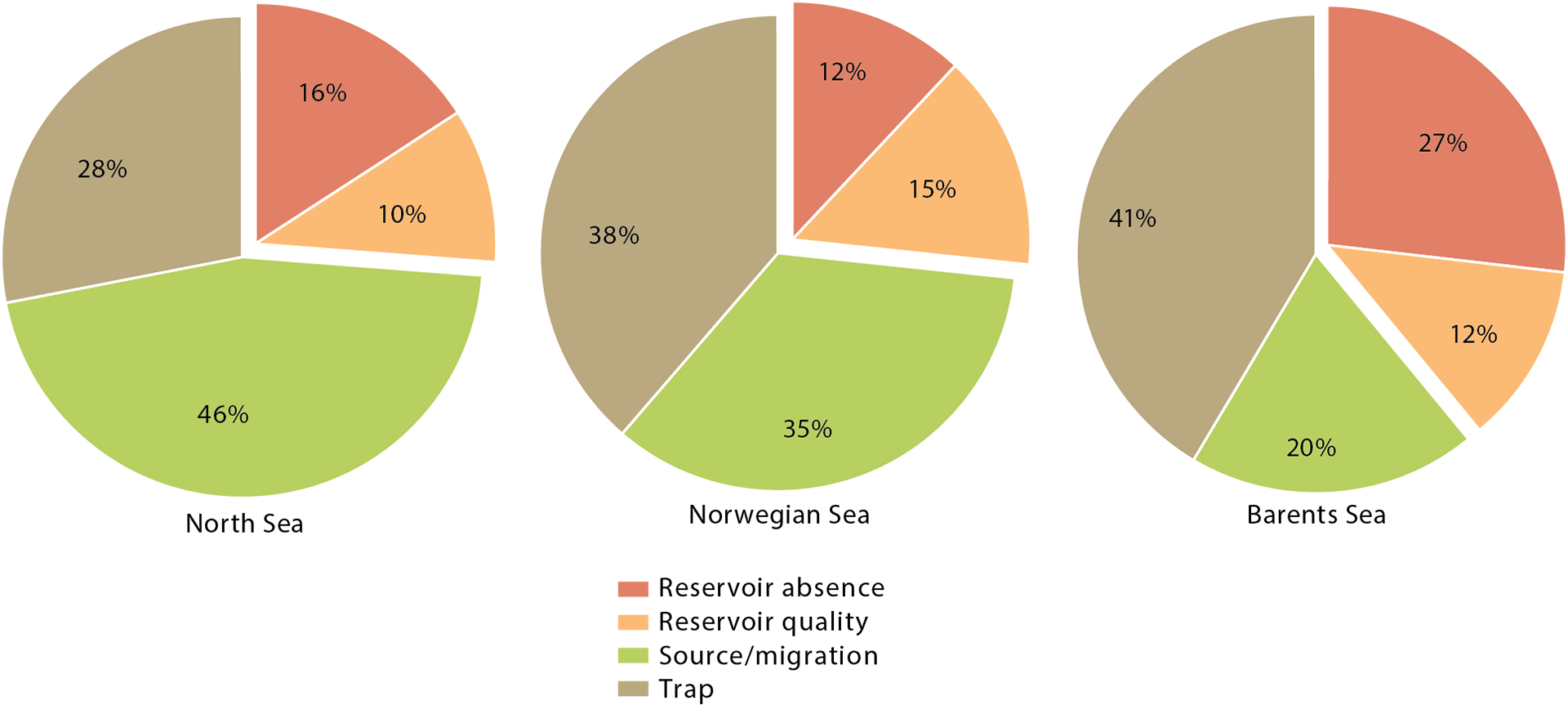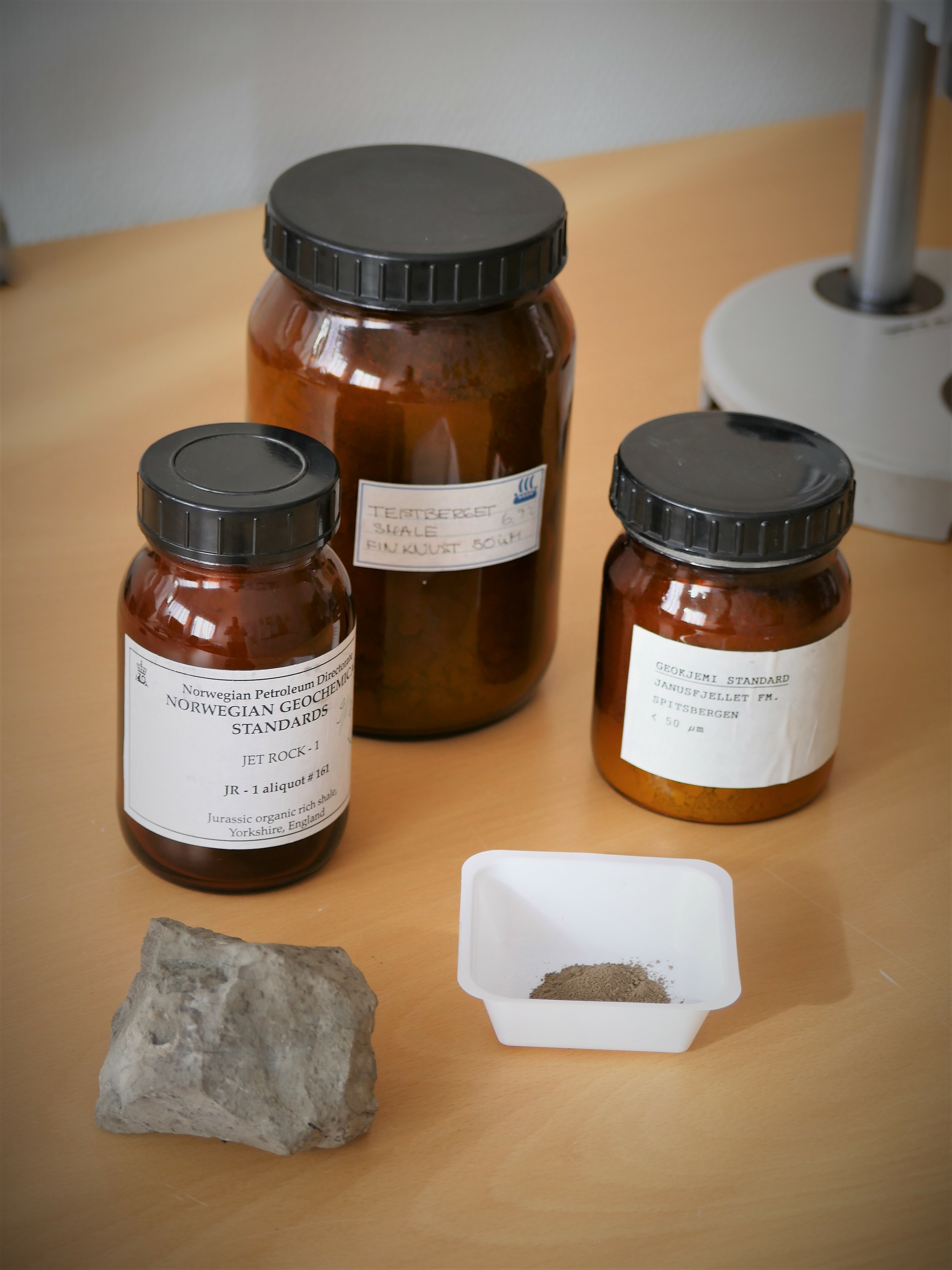Exploration geochemistry

Exploration geochemistry is a low-cost evaluation tool. Typically, projects involve a combination of source rock evaluation, hydrocarbon identification, and petroleum characterisation.
A major phase for the application of petroleum geochemistry in the E&P lifecycle is during the exploration stage. For unsuccessful exploration and appraisal wells, the critical risk factors vary by play type and maturity. However, post-well failure analyses of exploration wells often identify charge (source presence, maturity, migration, or timing) as the main failure mechanism (Rudolph and Goulding, 2017; Norwegian Petroleum Directorate, 2018; Veding et al., 2020) (Figure 1). Exploration geochemistry is a low-cost evaluation tool that can be applied to de-risk charge and improve exploration efficiency in all exploration projects from initial basin screening to play analysis, prospect evaluation and finally well evaluation and field delineation. Although study aims can vary depending on the exploration maturity of a project, in general, a combination of source rock evaluation, hydrocarbon identification, and petroleum characterisation is involved.

Figure 1. Main reasons reported for dry targets in the North, Norwegian and Barents Seas in percentages (Norwegian Petroleum Directorate, 2018).
Matching analyses with aims
Aspects included in the source rock evaluation are typically determining whether any source rocks are present, the type and amounts of hydrocarbons they might generate, the environment in which they were deposited, their thermal maturity, and possible evidence of related hydrocarbons.
Once a new well is drilled, the scope of exploration geochemistry is to identify the presence of hydrocarbons, describe their characteristics and determine whether they are indigenous or if they represent migrated petroleum.
The hydrocarbons present in source rocks or stained reservoir rocks can all be described as bitumen. The hydrocarbons present within a rock matrix must first be extracted whereas liquid hydrocarbons can directly be analysed. The different sample types contain similar compounds and can be analysed in the same way, providing information about:
- Major contributors to kerogen
- Depositional environment
- Maturity
- Oil-oil and oil-source correlation
- Alteration of oil
- Inferring source age from oils alone
- Identification and characterisation of oil (including palaeo-oil legs) in reservoirs
- Vertical and lateral heterogeneities in reservoirs and possible causes
- Influence of oil-based drilling mud

Figure 2. Source rock samples.
Source rock evaluation
Basic screening, using cost effective and relatively rapid methods, is usually performed on a large sample set in order to assure adequate resolution of variations within a suspected source unit. Results of TOC and Rock-Eval analyses provide a general idea about source rock quality and type, but sometimes they can be misleading, so some form of validation is often worthwhile. This may be achieved by examination of a sub-set of samples with more detailed analyses, providing a more complete and reliable indication of source rock quality and maturity.
Based on screening, a sub-set of samples may be selected for more detailed analyses, providing a more complete and reliable indication of source rock quality and maturity. Pyrolysis-GC effectively identifies the individual compounds that go to make up the total hydrocarbon yield (S2 peak) from Rock-Eval and provides a more reliable indication of the type of petroleum that may be generated. Visual kerogen analysis determines the type of organic matter present, which also contributes to a knowledge of source rock quality. Vitrinite reflectance is a standard maturity measurement, which is used to calibrate generation modelling. The amount of bitumen that can be extracted provides an additional measure of oil potential, and further kerogen quality and maturity information can be gained from the detailed analysis of extracted bitumen (see hydrocarbon identification and characterisation). Ultimately, for modelling of generation it may be useful to obtain kinetic data for selected source rock samples, particularly if suitable generic published data are not available.
APT have also developed a spreadsheet-based code that inputs standard petrophysical logs (Dt, RHOB, Rt, Gr) and calculates an estimated TOC and HI. This approach provides the best way to estimate net-source rock, especially when calibration data are available.
Hydrocarbon identification and characterisation
First indications of the presence of migrated hydrocarbons are provided by basic screening analyses and can involve the evaluation of wellsite gases as well as the analyses on rock material using e.g. fluorescence scanning, and traditional or reservoir mode Rock-Eval pyrolysis. A separate article in a later newsletter will cover the topic of wellsite gases and their evaluation using Girasol, APT’s commercially available gas interpretation software package.
Correlation of results with wireline logs is recommended, and indications for the presence of hydrocarbons, segregation and other contacts can be confirmed by the more detailed analysis of oil/condensate and gas. As liquid hydrocarbons present in source rocks or stained reservoir rocks contain similar compounds, they can be analysed in the same way and provide similar information after they are extracted from the rock matrix.
Determining the compositional characteristics and physical properties can provide information on whether oil and gas are co-genetic or from different sources, inferred expulsion maturity within the hydrocarbon kitchens, what alteration processes have operated, correlation of oil with other oils in the area and source rocks, and indications of likely source characteristics in the absence of source rock data.
General physical properties of oil (e.g. density/API gravity, Topping (>210°C), wax content, and viscosity) are generally applicable to engineering aspects.
Major element composition can be performed on oils, extracted bitumen and kerogen. These can aid determination of oil properties and the type of kerogen present. Trace element analysis of oils, for Ni and V, can provide information on the depositional environment of the associated source rock.
Stable isotopic compositions of major elements provide more information, allowing correlation of oils and source rocks and further information about types of kerogen and depositional environment. C and H isotopic composition can be obtained for isolated kerogen, whole oil/bitumen and SARA fractions. More detailed information can be obtained from C isotopic ratios of individual, major n-alkanes and acyclic isoprenoids (compound specific isotope analysis CSIA), particularly with regard to correlation and reservoir segregation. Sulphur isotopic ratios of organic S in oils can be worthwhile if information on depositional environment related to anoxicity and sulphate-reduction is required.

A comprehensive range of analyses of hydrocarbon fluids at the molecular level permits oil-oil and oil-source correlation and, in the absence of the relevant source rock, to infer characteristics of an oil’s source. Whole oils and extracts, which are complex mixtures, can be fractionated to facilitate further analysis (for example, into saturates, aromatics, resins and asphaltenes, also known by the acronym SARA). However, some very useful information can be gained directly from whole oils/extracts. The relative abundances of the four bulk fractions can provide useful information about the origin of bitumen, including the presence of migrated oil and alteration processes, as well as contamination by organic drilling mud additives. Detailed analysis of hydrocarbon fluids is conducted by gas chromatography (GC) linked to various detectors. The detection system varies, depending upon the concentrations of the components of interest. A general purpose, flame ionisation detector (FID) is used for the major components, such as n-alkanes, whereas a mass spectrometer (MS) is used for trace components, such as biomarkers, or where compounds cannot be adequately resolved, and specificity is required. The most specific analyses involve a pair of mass selective detectors, represented by the term GC-MS-MS. All of these GC analyses provide extremely detailed compositional analysis that can provide answers to the questions raised above.
APT – a world leading consultancy specialised in petroleum geochemistry
An overview of the various analyses offered by APT can be found on our new webpage. All analyses are performed following well established and documented procedures and conform to the guidelines as described in the internationally approved and applied standard “The Norwegian Industry Guide to Geochemical Analyses – NIGOGA” (Weiss et al., 2000), and references therein. Our highly experienced staff will help you designing studies and selecting appropriate analyses, as well as interpreting the data in a regional or thematic context, aiming to answer your exploration questions and improve exploration efficiency. When we provide consultancy services, we strive to be part of an integrated team, providing advice and working in close collaboration with our clients.
For more information contact the Geochemistry department at APT: geochemistry@apt-int.com.
References:
Norwegian Petroleum Directorate, 2018. Resource Report. Exploration 2018. Stavanger. doi:10.1007/s12633-014-9264-5
Rudolph, K.W., Goulding, F.J., 2017. Benchmarking exploration predictions and performance using 20+ yr of drilling results: One company’s experience. AAPG Bulletin 101, 161–176.
Veding, H.M., Bjørheim, M., Blystad, F., Ramirez, A., Karlsen, K.L., 2020. Charge risk on the Norwegian Shelf, in: FORCE – Petroleum Charge and Migration.
Weiss, H.M., Wilhelms, A., Mills, N., Scotchmer, J., Hall, P.B., Lind, K., Brekke, T., 2000. NIGOGA - The Norwegian Industry Guide to Organic Geochemical Analyses, Edition 4. ed. Norsk Hydro, Statoil, Geolab Nor, SINTEF Petroleum Research and the Norwegian Petroleum Directorate.